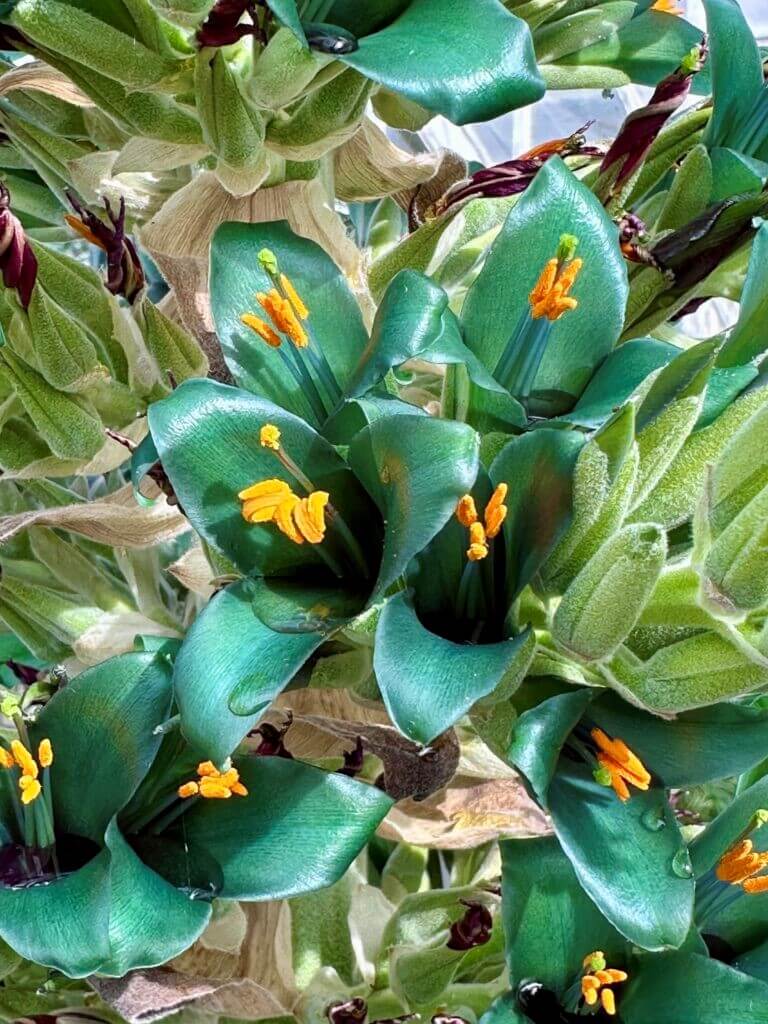The Cut Lawn Care and Landscape
Texas Applicator License #0929353
Menu
Menu
Call or Text today

Texas Commercial Applicator
License #0929352
Sapphire Plant Blooms For First And Last Time In 20 Years
Rare "Sapphire Tower" Flowers After 20-Year Wait at Birmingham Botanical Gardens
Birmingham, UK (April 18, 2024):
A breathtaking sight has unfolded at the Birmingham Botanical Gardens! After a patient 20-year wait, the rare and aptly named “Sapphire Tower” plant sapphire tower plant (Puya alpestris) (Puya alpestris) has finally flowered, captivating visitors with its otherworldly beauty.
A Decade in the Making:
This extraordinary plant, native to the high altitudes of the Chilean Andes, is renowned for its slow growth and infrequent flowering cycle. Taking up to ten years to produce its stunning blooms, the Sapphire Tower adds a touch of the exotic to the Birmingham gardens. Distantly related to the pineapple, this unique bromeliad is sure to turn heads.
Hand Pollination for the Future:
Since the Sapphire Tower relies on hummingbirds for pollination in its natural habitat, the resourceful botanists at the Gardens have devised a clever solution. Using paintbrushes with meticulous care, they are hand-pollinating the flowers to ensure seed production and the continuation of this fascinating species within the collection.

Otherworldly' plant blooms for first time in decade
A Fleeting Display of Turquoise Magic:
The Sapphire Tower’s flowers are nothing short of mesmerizing. Their vibrant metallic turquoise color explodes against a backdrop of deep green leaves and sharp spines, with pops of orange from the anthers adding another layer of visual intrigue. This captivating display is expected to last only 10 days to two weeks, so visitors are encouraged to plan their visit promptly to witness this rare phenomenon.
Preserving a Legacy:
While the current Sapphire Tower plant botanists at the Gardens will die after flowering (a characteristic known as monocarpic), the hand-pollination efforts hold the promise for future generations. If successful, the collected seeds will pave the way for cultivating new generations of this magnificent plant, allowing future visitors to marvel at its beauty.
Securing the Future
While the parent plant will die after flowering (a characteristic known as monocarpic), the botanists are hopeful that their hand-pollination efforts will yield seeds, allowing them to cultivate new generations of this magnificent plant for future visitors to enjoy.

